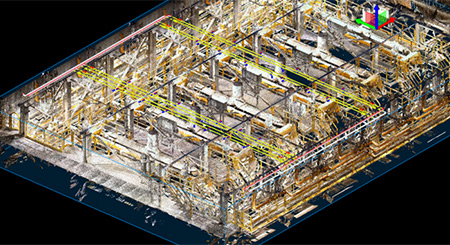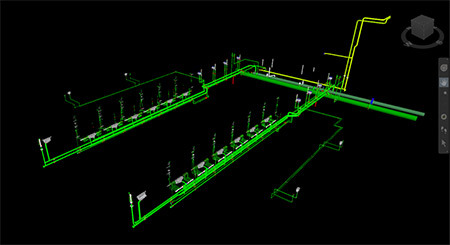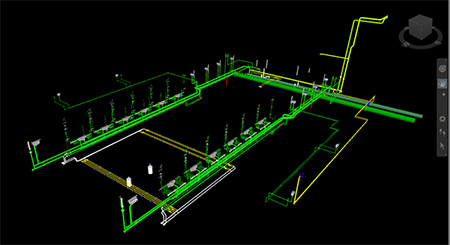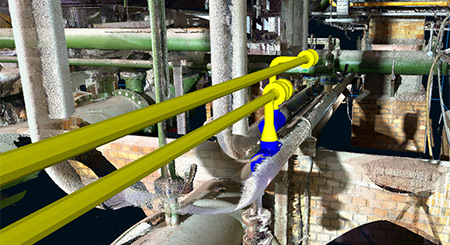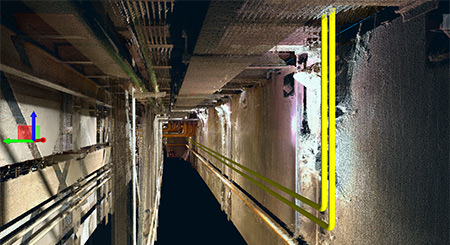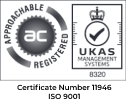- About
- How We Work
- Services
- Sectors
- Delivery
- Case Studies
- News
- Jobs
- Contact
Project Overview
Sometimes clients come to us because they want to know if it’s possible to successfully facilitate a project before investing serious amounts of time and money into it.
With our specialist design and engineering solutions, it’s easy to analyse its feasibility and provide them with a conceptual project design.
For this client, who operates in the industrial sector, the primary objective was to prove that the integration and extension of an existing cooling water system would allow expansion into other areas of the plant, where high temperatures and congested infrastructure were presenting a challenge.
Using 3D scanning and conceptual piping design, we put our engineering expertise to the test to prove the project was feasible and provided them with a project visualisation so they could obtain accurate cost estimates for the EPC project.
Service overview
What did we do?
Stage 1:
To conduct a detailed data collection process, we utilised an existing Navis model provided by the client and employed our innovative 3D scanning technology to detect and navigate any potential obstacles.
Stage 2:
With operational temperatures often exceeding 60°C, it was essential to identify existing systems and, through the use of proprietary 3D scanning equipment, we were able to streamline the design process and develop a concept that would minimise site disruptions in a single visit.
Stage 3:
By providing a comprehensive solution that tied in with the existing infrastructure, we could ensure that new piping routes could be routed through the congested infrastructure beneath the online unit.
Stage 4:
By overlaying our Trimble 3D scan onto the client’s Navis model, we were able to detail all the piping and assets and reveal unmodelled obstruction pathways, which would eventually allow for efficient clash resolution.
Stage 5:
To provide the client with a clear view of how project would look before it had even started, we created a solution visualisation that would significantly reduce the potential for clashes and costly reworks, as well as identifying risk mitigation factors during the construction phase.
The impact and outcome
By proving that the integrated extension of the cooling water system was viable, the manufacturer was able to see that operational expansion would provide a real opportunity in various areas of the existing plant.
By providing a visualised concept design, the client could gain a clear understanding of the proposed works and see the efficiencies that the changes would deliver.
From a cost accuracy perspective, they could now approach the market to gain a precise estimate for any subsequent EPC project whilst minimising the likelihood of any misunderstandings occurring in the commissioning phase, no matter which construction or engineering partner they chose to appoint.
Stakeholder Feedback
Reflecting on the successful concept design, Andrew Kofoed, Engineering Manager at Axi Design & Engineering, said: “This project allowed us to demonstrate our established method of Solution Provision in a highly-challenging environment and was completed on budget and ahead of schedule.”
